Do These Wheels Make My Tires Look Fat?
If there’s one thing our Slowtwitch readers and forum members seem to love, it’s tires. Nothing seems to spark more interest, debate, and (sometimes) outright rage. I’m hoping we can avoid that last part.
I should also mention that in the past, I was the resident guy for Things That Roll (wheels & tires) here at Slowtwitch… aaaaand, I’m back! I’ve always had a more-than-mild obsession with rubber, so you can expect to see more technical content coming from me in the future.
In my time working in the industry for various manufacturers and publications, there has been a big shift away from tubular tires (also called sew-ups). These are the tires that must be attached to a tubular-specific wheel using a special glue or adhesive tape. Nowadays, “most” people are using clincher tires, which have a mechanical interface in which the tire beads hook in to the rim edges. We’ll ignore the pros and cons of tubulars vs clinchers for now – I only mention this because today’s discussion focuses exclusively on clincher wheels and tires.
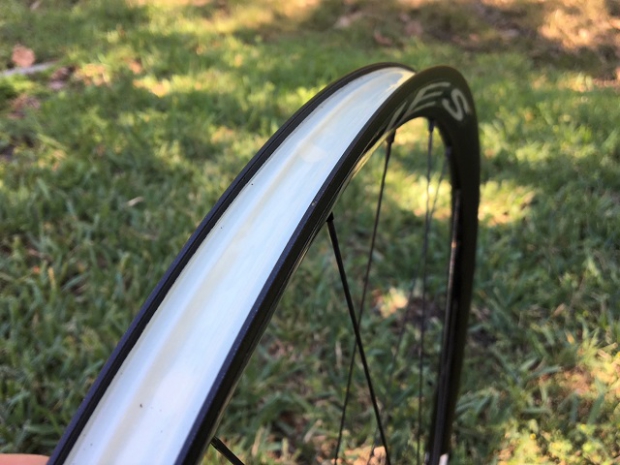
How (Clincher) Rim Width Impacts Tire Width
There is a big issue that is affecting wheel, tire, and bike frame manufacturers, which is still misunderstood by too many cyclists and triathletes. It’s this:
If you ride modern wide-rim clincher wheels, they are making your tires look fat (fatter than those jeans may or may not make your rear-end appear). However, it doesn’t just make the tires look fat – the measured size at a normal inflation pressure is actually larger (in both width and height). The problem this presents is that the tires may not fit in to your fancy new bike.
This image (below) is from the folks at Hed, and it shows how rim width affects inflated tire size.
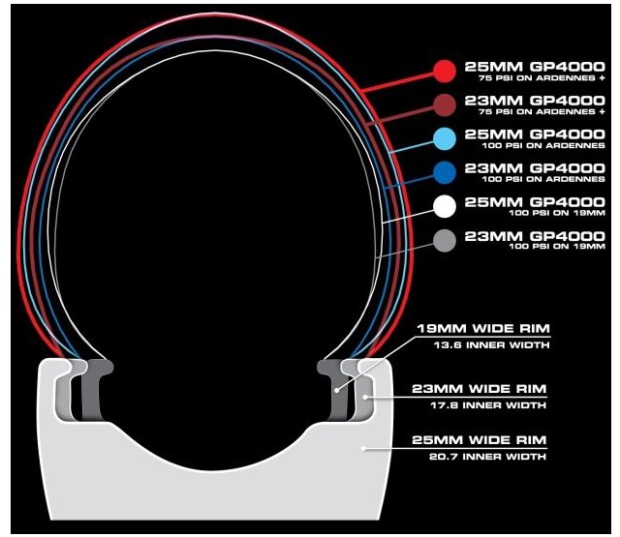
For example, if you buy a super-slick aero road bike, and the frame manufacturer says that it fits up-to-a-25mm tire, you might think, “Great, time to buy some 25mm tires”. If, however, you install those tires on a wide set of rims, the actual inflated size could be as large as 28 or 29mm. Even if the tires squeeze in to the frame, there’s a good chance that they’ll rub your shiny paint right off. Party foul. Not good.
The key take-home of this article, if you don’t read any further, is this: If you want to know the real width of your tires (on which you should base your tire pressure), the best course of action is always to measure them, using a caliper, at normal inflation pressure. Do this with the tires installed on the wheels you’re actually going to use.
Fine print: If you buy brand new tires, they normally stretch out a little bit over time. For road tires (23 – 30mm or so), they normally gain about 1mm in width after the first couple weeks of being inflated and used.
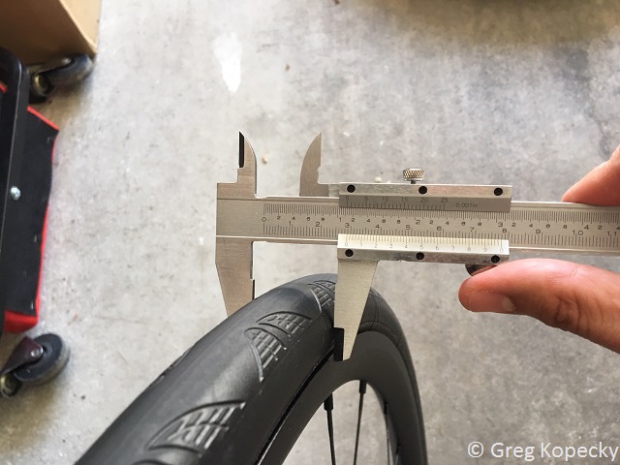
You may be wondering – How does this play out in the real world? Let’s break it down.
Most “old” road rims measured about 19mm in external width (measured at the braking surfaces), or about 13-15mm internally (measured inside between the bead hooks). With a rim like this, your 23mm tire should measure about 23mm.
The second generation of road rims came out in about 2007 (wide rims existed before this, but they were primarily heavy touring rims that were intended for use with large/heavy touring tires). These second-gen rims typically measure about 23mm externally, and 17mm internally. They make your “23mm” tire measure in the 24-25mm range at normal pressure.
Finally, we now have a host of even wider rims, with an external width ranging from 25-30mm, and an internal width of 21mm. These make your “23mm” tire measure in the 25-27mm range at normal pressure.
NOTE: It is always the internal width of the rim that actually drives the inflated tire with. The internal bead hooks of the rim are what physically constrain the tire.
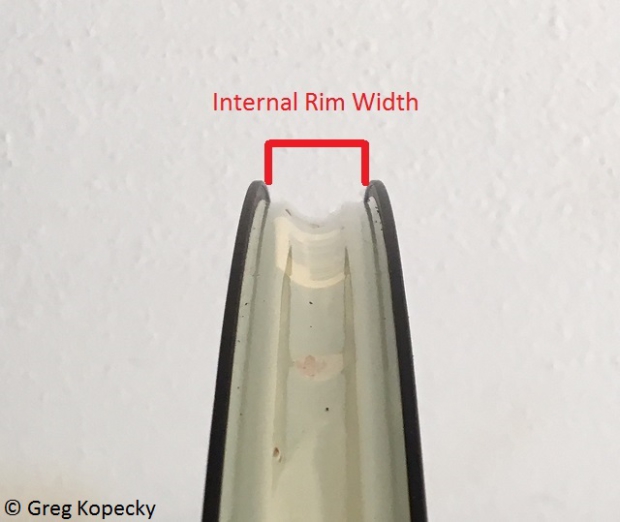
Here is a handy cheat sheet that will give you a good idea of what to expect in terms of tire “growth” from a wide rim. You can reference this next time you buy tires.

This chart shows a few examples of actual tire sizes. Yes, you may see some variation depending on your tire and wheel model – I’m giving you approximate numbers based on my experience.

Here’s a real-world example. My “25mm” Continental GP4000 measures 28.8mm at 70psi on a Hed Ardennes Plus rim (with 21mm internal width):
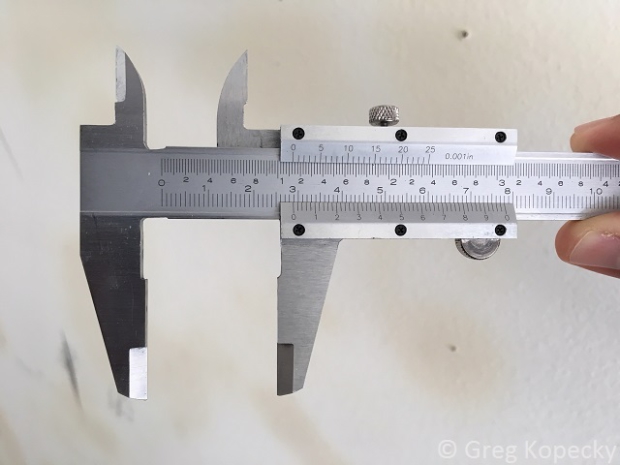
As you can see, there is more than meets the eye when it comes to tire sizes. Generally speaking, cyclists are becoming more accepting of larger tires for mountain, road, and gravel riding (and for most cases, that’s a very good thing). Triathletes seem to be less willing to play along, but that is also due to the fact that most triathlon bikes have limited tire clearance. Times are slowly changing, however.
Why would you want to use a larger tire – or perhaps a wide rim that makes your existing tire larger? In brief, a larger tire gives you a greater distance between your rim and the road, allowing for a lower air pressure without risk of damaging the rim on a pothole – providing better ride comfort. In addition, this generally leads to the ability to ride faster, especially over rough roads.
The super science tire geeks will find ways to poke holes through that last sentence, with special cases and specific tires. If you’re an Average Joe Age Grouper, and you do triathlons for fun and competition (and you DO NOT want to mess with power meters, analyzing data files, and hand-holding your equipment) – my advice is to ignore the well-meaning geeks for now, and err on the side of larger tires and lower pressure. Comfort, safety, and speed are your friend. If you’re a super science tire geek, you already know everything and don’t need my help anyway (just kidding – can’t we all be friends?!).
In a later article, we’ll cover more specifics on tire pressure, and try to find out what the new “standard” tire size is for triathlon. Spoiler alert: Anything under 700x23mm is dead. 700x23mm might also be dead soon – and we aim to find out when and why. Finally, there’s some new wheel technology currently sold and on the horizon that appears to be minimizing or – gasp – eliminating any aerodynamic penalty from (really) wide tires. Stay tuned!


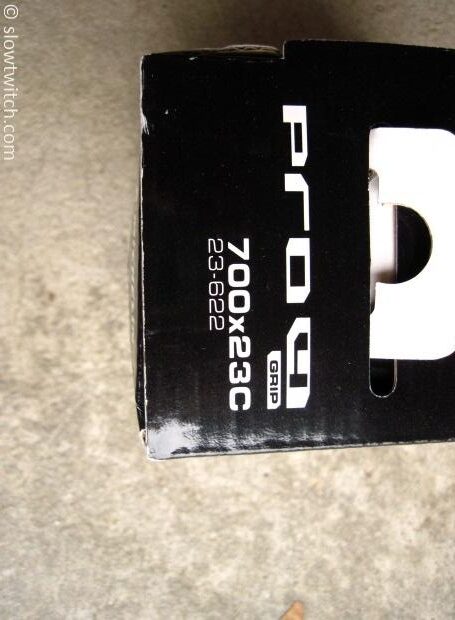
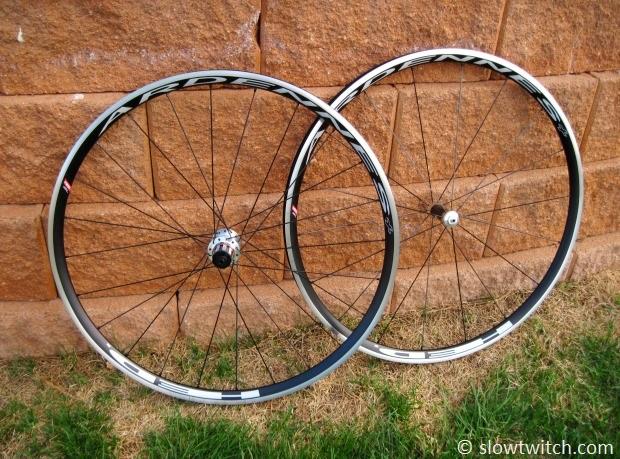
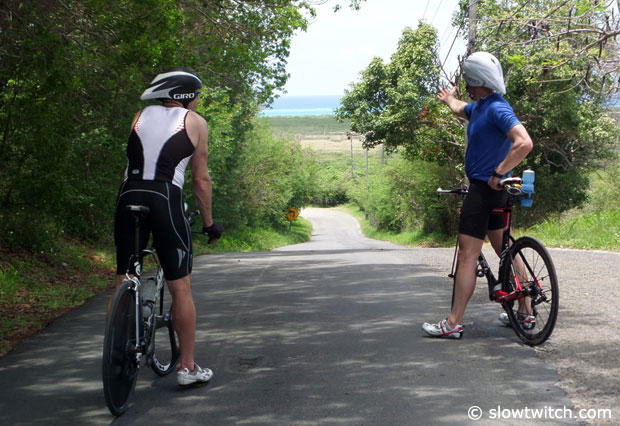
Start the discussion at slowtwitch.northend.network